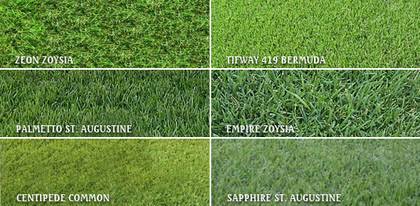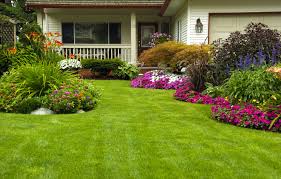St Augustine grass (Stenotaphrum Secundatum) widely known as buffalo turf in several parts of the world today is a warm-season grass mostly grown in tropical climates.
This grass is said to be a medium-to-high maintenance invasive weed that tends to outgrow other grasses in its habitat. This invasive weed belongs to the Poaceae family of grasses in the order of Poales, they are generally monocotyledonous plants.
St Augustine grass is mostly cultivated in regions that have hot climate conditions and also in subtropical regions. They form large carpet-like turf, crowding out weeds and grass, they are mostly seen in water areas like marshes and lagoons.
They are known for their flat blade-like leaves, dense layer, and can be grown wherever there is a good amount of moisture for it to blossom and spread out their dark green leaves.
Most ranch owners today employ the use of St Augustine grass because of its drought-tolerant property which made it a very popular grass used also in pastures. This grass produces high-quality turf and grows where most grasses can’t grow.
Read Also: Zoysia Grass Complete Growing Care Guide
St Augustine grass is said to be drought-tolerant when compared to Bermuda or Zoysia grass as they both tend to get dormant in drought. One of the major drawbacks of St Augustine grass is that it is not cold tolerant, therefore you will have to be in a region that has a warm climate, however, this is applicable if only you intend on growing it.
The St Augustine grass seeds, St Augustine grass plugs, or the St Augustine grass sod can be grown in a variety of soils, but it requires irrigation and moderate fertilization. It is highly recommended that you grow this grass in a fertile and well-drain area.
They are grown and are suitable in coastal areas in most cases, due to their high salt tolerance. Every turfgrass has its good and bad side, however, the St. Augustine grass is not left out despite some of its interesting and well-known facts which we will be discussing later in this article.
Some of the problems associated with the St. Augustine grass include cultural and pest problems which can limit the usage of this grass. One good way to tackle the cultural problem is by mowing and it is generally a vital cultural practice for all turfgrasses.
However, not mowing your grass property can result in a reduction of water absorption to the root of the grass and can also create entry points for the diverse development of weed.
Read Also: Rhodes Grass (Chloris gayana Kunth) Complete Guide
When getting rid of this grass in your lawn you should apply the cultural practice, instead of using pesticides and herbicides. Although using pesticides and herbicides in getting rid of weed in your lawn is very effective but toxins from these chemicals can or may end up in our food or waterways thereby causing individuals serious health problems. Also applying cultural practices such as mowing and irrigation can help you to certainly identify any problem with your turfgrass.
Regarding the best fertilizer for St Augustine grass, one way you can reduce pest attacks or damage on your turfgrass is by not applying too much fertilizer for St Augustine grass. When there is an excessive fertilizer application, it can lead to significant thatch up, creating a good habitat for bugs and webworms.
One of the downsides of the St. Augustine grass is it not being able to tolerate cold weather conditions, so it is not advisable to grow it or expose it to cold or freezing temperatures.
Unlike Zoysia grass which requires less maintenance, St. Augustine requires medium-to-high maintenance, because it is a high-quality producing weed.
You should take note that too much fertilization can cause excessive thatch accumulation. The major disease associated with this grass is known as St. Augustine Decline Virus (SADV).
Read Also: Waste Management Jobs – Tips to Get Started
Varieties of St Augustine Grass

Below are some of the varieties of St. Augustine grass:
- Bitterblue
- Common
- Delmar
- Floratam
- Floratine
- Floralawn
- Jade
- Raleigh
- Seville, etc.
1) Bitterblue
This is an improved variety of the Stenotaphrum Secundatum known for its fine texture and dark green color. This variety has an improved cold tolerance compared to other varieties but it is not resistant to bugs and other pest attacks.
2) Delmar
This variety has slow lateral growth thereby takes a longer period to recover from damages caused by pests. Its lateral growth property is caused by its semi-dwarf growth habit.
3) Floralawn
This is another variety that was released by the University of Florida, it has improved resistance to pest attacks and damage. They are mostly grown in mild temperatures, possess good leaf texture, and are also sensitive to cold temperatures.
This variety of Stenotaphrum Secundatum is a dark green grass with a very fine texture compared to Floralawn and it is also an improved variety of semi-dwarf Stenotaphrum Secundatum.
4) Seville
Seville is another dark green semi-dwarf grass that is sensitive to cold temperatures and has a compact growth habit.
Read Also: Health Benefits of Stubborn Grass (Sida Acuta)
Benefits of St Augustine Grass

This buffalo turf is one of the most popular grasses available due to several reasons. However, there are so many benefits which this grass tends to provide which include:
(1) It is very good and an excellent choice for coastal yards due to its salt-tolerant property.
(2) This robust perennial grass works well for pastures.
(3) You can use it in your yard due to its fine texture and carpet-like nature
(4) They can be used in golf areas and football pitches as it grows high enough to permit the average amount of feet traffic Due to their aggressive and invasive nature, they tend to compete well with other weeds.
This perennial grass has different uses yet there are some downsides associated with this grass, some of which are:
(1) This grass will not grow well in areas with deep shade
(2) Growing it requires high maintenance compared to Bermuda and Zoysia grass which requires little maintenance. This is why sometimes, people try to compare between St Augustine grass vs Bermuda
(3) The worst part is that this perennial grass is very vulnerable to pest attacks.





